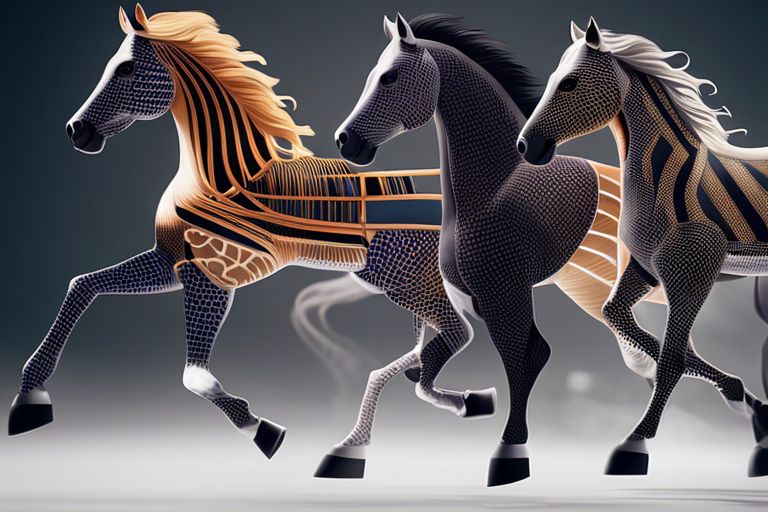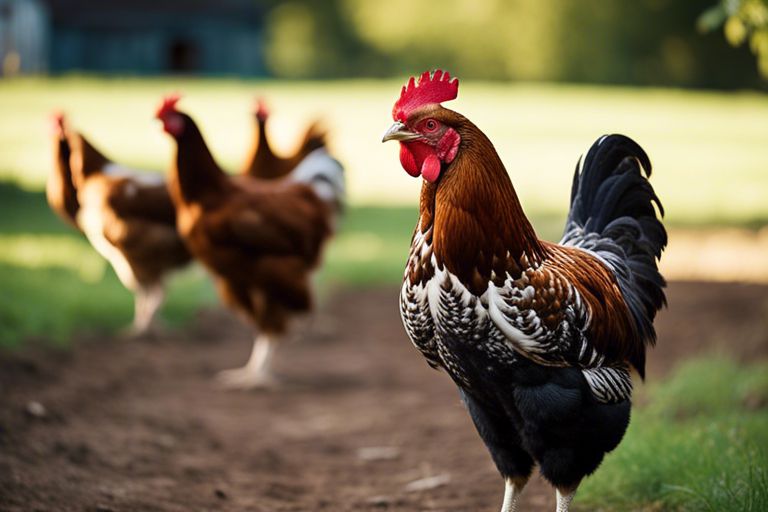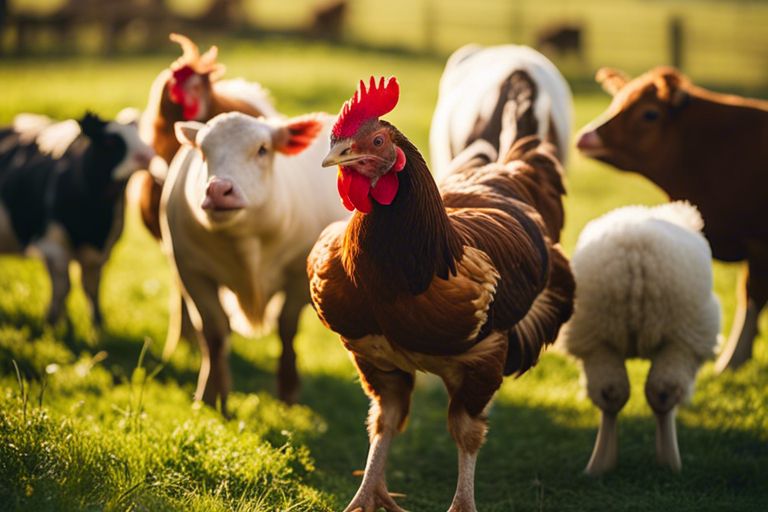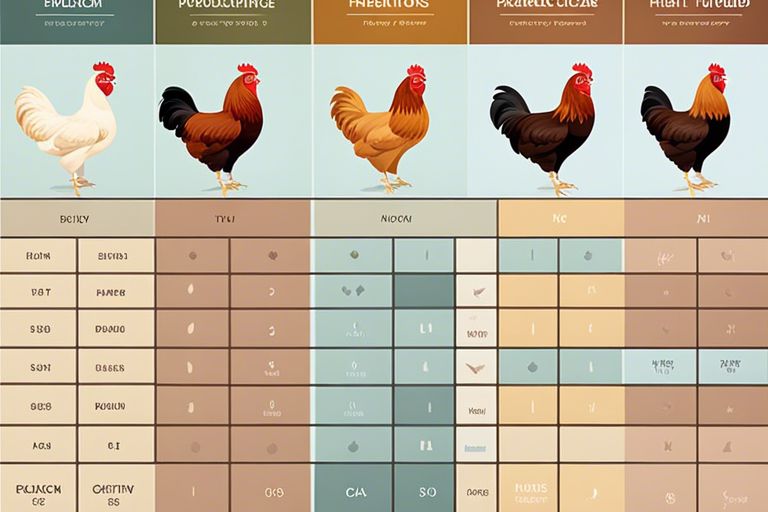Coat colors can tell you a lot about a horse’s genetics and heritage. Understanding the genetics behind these colors can be fascinating and also important when it comes to breeding or identifying potential health risks. In this guide, you will explore into the world of horse coat colors and learn how genetics play a role in determining the stunning variety of hues you see in these majestic animals.

Understanding Horse Coat Colors
To truly understand horse coat colors, you must first familiarize yourself with the genetic basis behind each hue. Different genes control the pigmentation of a horse’s coat, resulting in a wide array of colors and patterns. By delving into the genetics of coat colors, you can unravel the mystery behind why horses display such a diverse spectrum of hues.
Basic Coat Colors: Bay, Black, Brown, Chestnut, Gray, and Roan
Colors such as bay, black, brown, chestnut, gray, and roan are classified as the basic coat colors in horses. These colors are determined by specific genetic factors that dictate the production of pigments in the horse’s coat. Understanding the basics of these coat colors is crucial in comprehending the variations and combinations that can occur in a horse’s appearance.
Dilute Coat Colors: Cream, Dun, and Silver
Colors like cream, dun, and silver represent dilutions of the basic coat colors. These dilutions are caused by additional genes that alter the distribution of pigments in the horse’s coat, resulting in unique shades such as palomino, buckskin, and silver dapple. By understanding how these dilutions interact with the basic coat colors, you can predict the potential outcomes of breeding two horses with dilute genes.
A deeper understanding of dilute coat colors allows you to appreciate the subtle variations that can arise within each hue. Whether you prefer the striking appearance of a cream-colored coat or the soft sheen of a silver dapple, recognizing the genetics behind these dilutions adds depth to your appreciation of horse coat colors.
White Markings and Patterns: Blazes, Socks, and Stockings
Basic coat colors are often adorned with white markings and patterns, adding an extra dimension to a horse’s appearance. From blazes on the face to socks and stockings on the legs, these markings are influenced by separate genetic factors that control the distribution of white pigment in various areas of the horse’s body. By understanding how these patterns are inherited, you can predict the likelihood of specific markings appearing in offspring.
With a keen eye for detail, you can appreciate the intricate patterns of white markings that embellish a horse’s coat. Whether you admire a horse with a bold blaze down its face or one with elegant stockings on its legs, recognizing the genetics behind these patterns enhances your ability to distinguish between different coat variations.

Genetics of Horse Coat Colors
Dominant and Recessive Genes: How They Affect Coat Color
Now, when it comes to understanding horse coat colors, it’s imperative to grasp the concept of dominant and recessive genes. Dominant genes are the ones that will be expressed in the horse’s coat color, while recessive genes will only show up if there are no dominant genes present. Different combinations of these genes determine the variety of coat colors seen in horses.
The Role of Melanocortin 1 Receptor (MC1R) in Coat Color
Color, the Melanocortin 1 Receptor (MC1R) plays a crucial role in determining the distribution of pigments in a horse’s coat. This receptor is responsible for regulating the production of eumelanin (black pigment) and pheomelanin (red pigment). Variations in the MC1R gene can result in different coat colors, from bay to chestnut to black.
To explore deeper into this topic, variations in the MC1R gene can also lead to other coat color patterns, such as roans and duns. These patterns are a result of how the MC1R gene influences the distribution of pigment-producing cells in the growing hair follicles.
Genetic Interactions: How Multiple Genes Influence Coat Color
Coat, genetic interactions between multiple genes can create a wide array of coat colors and patterns in horses. These interactions can sometimes produce unexpected colors or markings, even when the parent horses have more typical coat colors. By understanding how different genes interact, you can predict the possible outcomes of breeding specific horses.
ReceptorIt is important to note that while understanding the basic genetics of horse coat colors is fascinating, the science behind it is complex. Many factors, including gene mutations and interactions, contribute to the beautiful diversity of horse coat colors we see today.
Factors Affecting Horse Coat Colors
After understanding the basics of horse coat colors, it’s important to research deeper into the factors that can affect them. These factors can range from genetics to environmental influences on the horse’s coat.
Heredity: The Influence of Parental Coat Colors
With heredity, the coat color of a foal is determined by the genetic makeup of its parents. Each parent contributes a set of genes that interact to produce the foal’s final color. For example, if both parents carry the gene for a specific color, there is a higher chance that the foal will inherit that color. However, there are also cases of gene mutations and variations that can lead to unexpected coat colors in offspring.
Environmental Factors: Sunlight, Nutrition, and Age
- Sunlight: Exposure to sunlight can cause bleaching or darkening of the horse’s coat color, especially in areas with intense UV rays.
- Nutrition: A balanced diet rich in crucial nutrients can contribute to a shiny, healthy coat.
- Age: As horses age, their coat colors may lighten or grey out due to natural aging processes.
The environment plays a vital role in the horse’s coat color. Factors such as sunlight exposure, nutritional intake, and age can all influence how vibrant or faded a horse’s coat appears. Recognizing these factors can help you better understand and manage your horse’s coat color.
Genetic Mutations: Rare Coat Colors and Their Causes
Colors
Understanding genetic mutations is crucial in comprehending rare coat colors in horses. These mutations can result in unique colors such as silver dapple, champagne, or pearl. While these colors may be visually striking, they can also carry certain health implications or breed-specific characteristics.
Identifying Horse Coat Colors: A Step-by-Step Guide
Once again, identifying a horse’s coat color may seem daunting at first, but with a bit of knowledge and observation, you can become an expert at determining the different hues and patterns. Here is a step-by-step guide to help you identify horse coat colors accurately.
| Observing Coat Color Characteristics | Using Breed Standards and Color Charts for Identification |
Observing Coat Color Characteristics: Shade, Tone, and PatternYou can start by observing the shade, tone, and pattern of the horse’s coat color. Shades can range from light to dark, with tones varying from warm (red, yellow) to cool (blue, silver). Patterns such as dapples, roaning, or appaloosa markings can also help you determine the coat color. |
Using Breed Standards and Color Charts for IdentificationBreed standards and color charts are valuable resources that can assist you in identifying horse coat colors. Many breed associations have detailed descriptions of acceptable colors and markings for each breed. Color charts provide visual references to compare the horse’s coat color to standard colors. |
Breed standards serve as guidelines set by specific breed registries to maintain the purity and characteristics of the breed. The standards often include detailed descriptions of acceptable coat colors, markings, and patterns for registration purposes. By referring to these standards and color charts, you can pinpoint the exact coat color of a horse based on the breed-specific criteria.
Consulting with Experts: Breeders, Veterinarians, and Equine Specialists
Any time you are uncertain about a horse’s coat color, consulting with experts such as breeders, veterinarians, and equine specialists can provide valuable insights. These individuals have extensive experience and knowledge in identifying various coat colors and can offer guidance based on their expertise.
Guide yourself through the process of identifying horse coat colors by utilizing the resources and expertise available to you. By carefully observing coat color characteristics, referring to breed standards and color charts, and seeking advice from experienced professionals, you can accurately determine the coat color of any horse you encounter.

Tips for Breeding Horses with Desired Coat Colors
For breeding horses with desired coat colors, there are several tips you can follow to increase the likelihood of producing the colors you want. Here are some key points to consider:
- Select the Right Breeding Stock: When choosing horses to breed, look for individuals that carry the genes for the coat colors you are aiming for. By selecting horses with the desired genetics, you increase the chances of producing offspring with the colors you want.
- Avoid Close
Related Matings: While linebreeding can help to fix coat colors, inbreeding can also magnify undesirable traits. Be cautious of inbreeding too closely, as it can lead to health problems and genetic issues in future generations. - Consider Genetic Testing: Utilizing genetic testing can help you predict the coat colors of potential offspring more accurately. By understanding the genetics behind coat colors, you can make more informed decisions when breeding horses for specific colors.
Selecting Breeding Stock: Coat Color Considerations
Coat color is determined by genetic factors that are passed down from the parents to the offspring. When identifying breeding stock, it’s necessary to consider the coat colors of the parents and their genetic makeup. By analyzing the genes responsible for coat color, you can choose horses that are more likely to produce the colors you desire. Any mismatches in desired coat colors or genetics could result in unexpected outcomes in the foals.
Linebreeding and Inbreeding: Risks and Rewards
Tips for linebreeding and inbreeding should be approached with caution. While linebreeding can help to fix desirable traits, inbreeding increases the likelihood of recessive genes being expressed, including undesirable coat colors or genetic disorders. Any excessive inbreeding can weaken the overall gene pool and lead to health problems in the offspring.
Genetic Testing: A Tool for Predicting Coat Color
With advancements in genetic testing technology, it is now possible to predict the coat colors of potential foals more accurately. By analyzing the genes responsible for coat color, you can determine the likelihood of producing specific colors in your breeding program. Utilizing genetic testing can help you make informed decisions about which horses to breed together to achieve the desired coat colors in the offspring.

Pros and Cons of Different Horse Coat Colors
Your understanding of the pros and cons of different horse coat colors can help you make informed decisions when choosing a horse. Take a look at the table below to see the advantages and disadvantages associated with common coat colors.
| Advantages | Disadvantages |
| Easy to find matching tack and equipment | May show dirt and stains more prominently |
| Traditional and classic appearance | May blend in with the crowd in competitions |
| Widely accepted in most disciplines | May not stand out in a sales or marketing environment |
| In some cases, associated with specific traits or abilities | Prone to sun bleaching and coat fading |
Advantages and Disadvantages of Common Coat Colors
Coat colors such as bay, chestnut, and black are common in many horse breeds, which can make them easier to find and purchase. These colors are often associated with specific characteristics or performance abilities that can be advantageous in certain disciplines. However, common coat colors may also lack the uniqueness and individuality that some horse owners desire.
Rarity and Uniqueness: The Value of Uncommon Coat Colors
Value Rare and uncommon coat colors like perlino, silver dapple, or champagne can make a horse stand out and be memorable in any setting. These unique colors may garner more attention and interest, making them valuable for breeding programs, marketing campaigns, or personal enjoyment. Additionally, the rarity of these coat colors adds a sense of exclusivity and prestige to the horse.
Plus While uncommon coat colors can be visually striking and attention-grabbing, they may come with challenges as well. Finding suitable matches for tack and equipment, as well as limited acceptance in some traditional circles, are factors to consider when owning a horse with a rare coat color.
Breed-Specific Coat Colors: Their Significance and Implications
Pros Some horse breeds have specific coat colors that are highly prized and considered standard for the breed. These breed-specific coat colors can hold cultural significance, historical value, and even affect a horse’s marketability within its breed community. Owning a horse with a breed-specific coat color can enhance your connection to the breed’s heritage and traditions.
Another It is important to note that breeding for specific coat colors should not compromise other important factors such as conformation, temperament, and performance ability. While a rare coat color can be appealing, it should not be the sole consideration when selecting a horse for breeding or riding purposes.
Summing up
Considering all points in this guide to horse coat colors and their genetics, you now have a better understanding of the different variations and how they are inherited. By knowing the basics of genetics, you can predict potential colors in offspring, making informed decisions for breeding programs or simply satisfying your curiosity about the complexity of coat colors in horses.
Q: What is a basic guide to horse coat colors and their genetics?
A: A basic guide to horse coat colors and their genetics explains the different coat colors and patterns found in horses and the genetic factors that determine their appearance.
Q: What are the common coat colors seen in horses?
A: Common coat colors seen in horses include bay, chestnut, black, and gray. Other less common colors include palomino, buckskin, and pinto.
Q: How is coat color in horses determined genetically?
A: Coat color in horses is determined by the interaction of various genes that control the production and distribution of pigments in the hair. Genes such as Extension (E), Agouti (A), and Cream (Cr) play a role in determining the final coat color.
Q: What is the difference between a base color and a modifier in horse coat genetics?
A: A base color is the underlying color of the horse, such as black or red, while a modifier is a gene that alters the appearance of the base color, resulting in variations like dun, roan, or champagne.
Q: Can two solid-colored horses produce a foal with a different coat color?
A: Yes, two solid-colored horses can produce a foal with a different coat color if they both carry recessive genes for different coat colors or patterns. Understanding the genetic makeup of the parent horses can help predict potential coat colors in offspring.











